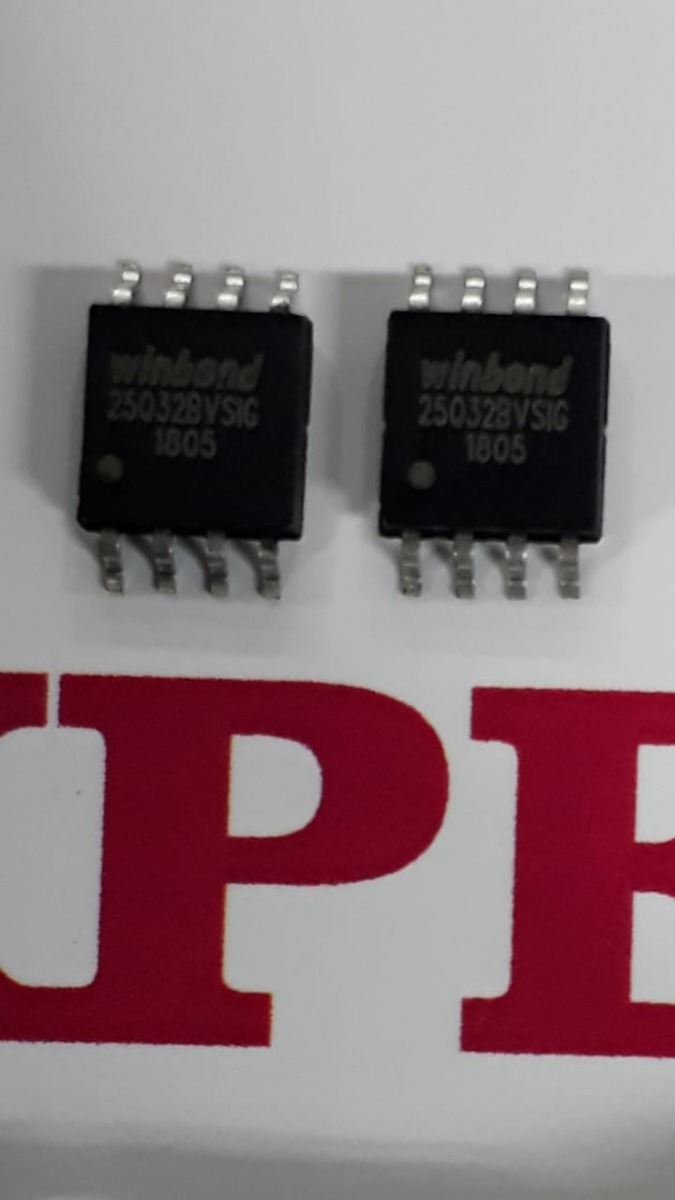
Winbond 25q32 Programmator

USB Programmer CH341A Series Burner Chip 24 EEPROM BIOS Writer 25 SPI. Blackcat USB SPI I2C JTAG Flash Programmer SPANSION MXIC Winbond.
Replaced winbond chip, is this correct? Hi, I have a Linux receiver that wouldn't flash properly, possibly due to a dodgy bootloader and thought I would try to replace the winbond chip, I have a GQ-4x programmer that I used to use for programming TSOP and luckily had an adaptor for it to fit the winbond.I have identified a replacement chip as 25Q32FVSIG. I found knocking around some old SPANSION S25FL016A chips that were very similar except for slightly different naming conventions to some of the pins, I programmed it with my bootloader after erasing chip and put it back on the PCB, the bootloader would become corrupted so I gave up with that and got the correct part which on ebay was W25Q32. I also tried to reprogram the original chip, firstly erasing it, then writing my bootloader to it, once the chip was back in the box I was in a semi up and running state but was still misbehaving. I know have the correct chip and it is a new chip, however, when I put it in my programmer I done a blank check on it and it failed as if to say it wasn't blank, I have now read the image and saved it.
What I am unsure of is, am I supposed to erase the chip before I put my booloader on or do I write straight on top of it?, I'm thinking that when I erased the original chip I erased something from it that is not supposed to be deleted, like a header or something for it. Som e solid advice would be greatly appreciated, until than I am going to attempt to write directly to the chip without erasing and put it in and see, if that doesn't work then I will erase it forst then write the bootloader and put in to pcb, in anycase, I have dumped the chip as soon as I received it and it certainly has something on it and I have it saved. EDIT: can write to chip but will not verify, I don't think it will let me erase it, when I erase it it happens in a nano second and still reports as failed on blank check.
A small PCB (extension bus to DIP-8 adapter) and a well configured SD card are all you need to turn your RPi into a SPI Flash programmer/dumper that you can use from the command line or your browser! Written originally for WizYAsep in C for Linux, only the low-level routines (GPIO and SPI) are specific to the Raspberry Pi. A smart programming algorithm has been developed to reduce wear. This system was integrated in the YGWM framework and uses the HYX file format.
It is currently limited to 3.3V chips with 24-bits addresses (128KB to 16MB capacity). I have validated 25LC1024, M25P40, A25L40P, AT26DF321, W25Q32BV, W25Q64, W25Q128F.
Otveti na test performiya. According to Google safe browsing analytics, Otveti-test.ru is quite a safe domain with no visitor reviews.
Please contribute your own chips:-) Raspberry Pi 2/3 compatibility is coming. The purpose of this project is to support the and other Free Hardware Designs with the help of a device that is: • Cheap: no significant investment so even beginners can do it • Compact and autonomous: can operate with a battery pack for easy handling on site (yes I have used mine outdoors in winter with no access to mains.) • Easy to make yourself: simple, easy to find components, no hard-to-solder parts. • Based only on Free Software (Affero GPLv3+ is chosen for everything) • Exempt of any proprietary technologies (directly or indirectly), such as USB: no driver or configuration to do for the user (you can use any OS or browser) • Plug&Play: connect it to your computer or the local hub, point your browser to the IP and start playing. • Perennial: store it for years on a shelf without fear of obsolescence.
• Powerful through integration with other modules from the YASEP framework A Flash SPI programmer is an essential engineering tool that has been done over and over. I built my first LPT-based SPI programming dongle around 2004, using instructions found on the Web. It was cheap and smart, stealing the power supply off the pull-up resistors, but you know what happened to the parallel printer port. Do you even have one left somewhere? Today most interfacing duties are performed over USB but this creates a whole lot of problems that will make me digress and rant. Fortunately Ethernet is one of the last communication ports that still remains in today's cost-conscious consumer (autistic) 'PC's. Shogun total war full game.